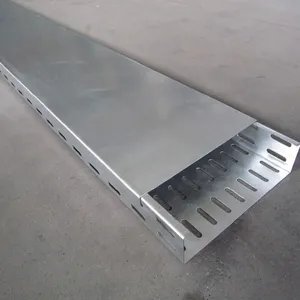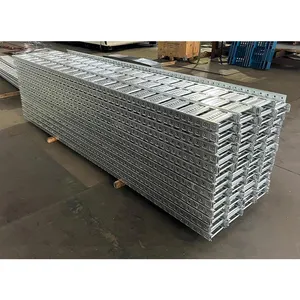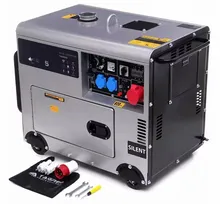What are Cable Trays
Cable trays are an essential component in modern electrical infrastructure, acting as a bridge that safely and efficiently routes and supports insulated electric cables. These structural systems are widely used in commercial and industrial applications where a large number of power cables or data cables need to be installed neatly and securely. Designed for flexibility in installation, cable trays can easily adapt to complex routing requirements while providing easy access for cable installation, maintenance, or changes.
Cable trays serve a diverse range of industries, from manufacturing plants and data centers to large-scale construction projects. They come in various materials such as stainless steel, aluminum alloy, and FRP (fiberglass reinforced plastic), each offering distinct advantages like corrosion resistance, durability, and strength. The selection of material depends on the specific environmental conditions and mechanical requirements of the installation site.
The principle behind cable trays is quite straightforward: they provide a support system that holds cables off the ground, protecting them from various hazards like moisture, chemicals, or physical damage. Unlike enclosed conduit systems, cable trays are open, which allows heat produced by the cables to dissipate more effectively and makes cables more accessible for inspection or repairs. The choice between different types of cable trays is largely dictated by the nature of the project and the level of protection required for the cables.
Types of Cable Trays
Cable trays come in several designs, each suited to particular needs in cable management. Here are a few common types:
- Ladder Tray: This type features a two-sided rail with rungs in between, resembling a ladder. It offers excellent support for heavy-duty cables and is ideal for applications where maximum airflow around the cables is necessary.
- Solid Bottom Tray: Providing a solid base for cables to lie on, this type is often used where minimal heat generation occurs or where protection from dust or debris is crucial.
- Wire Mesh Tray: Made of woven steel wires forming a mesh pattern, these trays offer great flexibility and ventilation for cables. They are typically used in data centers and server rooms where managing high volumes of data cabling is required.
- Channel Tray: These trays have a solid or ventilated bottom with side walls but no center supports. They are suitable for supporting low-voltage electrical wires or telecommunication cables.
- Perforated Tray: This type has a solid bottom with holes throughout to allow for some airflow around the cables. It's often used indoors where moderate protection from dust is needed without completely sacrificing ventilation.
How to Choose Cable Trays
When selecting cable trays for your business needs on Alibaba.com, it's important to consider several factors:
- Material: The material should be chosen based on environmental conditions such as exposure to chemicals, moisture, or extreme temperatures. For example, stainless steel is known for its corrosion resistance while FRP is preferred in corrosive environments.
- Application: Consider the specific use case such as construction, cable tray support, or electric wires installation. The type of tray must match the application requirements in terms of strength and protection.
- Load Capacity: Evaluate the weight and quantity of cables that will be supported by the tray. Heavier cable loads may require sturdier options like ladder trays.
- Environmental Conditions: If the installation is outdoors or in harsh environments, select materials that are weather-resistant like galvanized steel or aluminum alloy.
- Accessibility: Think about future maintenance or upgrades. Trays that offer easier access might be more beneficial if regular changes are anticipated.
By factoring in these considerations, businesses can identify the most appropriate type of cable tray that will ensure safe cable management while meeting their specific demands.
Best Cable Trays on Alibaba.com
Alibaba.com stands out as an invaluable resource for businesses across the globe seeking reliable cable tray solutions. With an extensive assortment of options from numerous suppliers worldwide, Alibaba.com caters to varied requirements whether you're outfitting a sprawling manufacturing plant or implementing a robust telecommunication infrastructure. The platform’s commitment to facilitating seamless trade shines through its user-friendly interface that simplifies finding products with specific attributes such as material type, features like fireproofing or flexibility, and applicable industries.
Moreover, Alibaba.com's Trade Assurance service reassures buyers that their payments are protected until order fulfillment is confirmed. This assurance combines with an immense selection that spans different materials—including stainless steel, aluminum alloy, and PVC—and configurations such as ladder-type systems or perforated designs to make Alibaba.com a top destination for purchasing wholesale cable trays.
The platform's global reach ensures that whether you're operating within the construction industry in Canada or setting up data centers in South Korea, Alibaba.com provides access to products that meet both local standards and international expectations. In essence, Alibaba.com leverages its vast network and cutting-edge e-commerce tools to connect businesses with high-caliber cable management solutions that uphold safety standards and enhance operational efficiency.
Common FAQs for Cable Trays
What materials are cable trays typically made from?
Cable trays can be constructed from a variety of materials, including but not limited to stainless steel, aluminum alloy, galvanized steel, FRP (fiberglass reinforced plastic), and PVC. The chosen material often depends on the specific requirements for resistance to corrosion, electrical conductivity, and environmental conditions.
How do I determine the appropriate size of cable tray for my project?
The size of the cable tray should be selected based on the number and size of cables that need to be accommodated. It's important to ensure that there is enough space for future additions or changes to the cable configuration without overcrowding, which can lead to overheating or damage to the cables.
Are there different types of cable trays for indoor and outdoor use?
Yes, there are cable trays specifically designed for indoor use that may have features like a solid bottom to protect against dust, while outdoor trays are typically made from materials that can withstand weather elements and may have features like perforations for water drainage.
What is the significance of the load capacity in selecting a cable tray?
Load capacity refers to the maximum weight a cable tray can support over a specified span. It is crucial to choose a cable tray with an adequate load capacity to prevent structural failure due to excessive weight from the cables.
Can cable trays support high-voltage power cables?
Cable trays are suitable for supporting high-voltage power cables as long as they are chosen with appropriate materials and design specifications that comply with the relevant safety standards and electrical codes.
How does one maintain a cable tray system?
Regular inspections should be conducted to ensure that the cable trays are not overloaded, damaged, or corroded. Any accumulated debris should be cleared to prevent fire hazards, and any structural issues should be addressed promptly.
Are there fireproof options available for cable trays?
Fireproof options are available in the form of materials and coatings that can resist high temperatures and prevent the spread of fire. Materials such as steel with fire-resistant coatings are commonly used for enhanced protection.
What features should I look for in a cable tray for data centers?
For data centers, look for cable trays that offer flexibility, ease of access, and excellent ventilation. Wire mesh trays are often preferred due to their adaptability and ability to manage large volumes of data cabling.
How does the installation type affect my choice in cable trays?
The installation type, whether standing, hook type or bolt inserting type, affects how the tray will be mounted and supported within your facility. It's important to choose an installation method that is compatible with your building's structure and the intended cable layout.
What considerations should be taken into account for seismic areas when installing cable trays?
In seismic areas, it is important to select cable trays designed to withstand vibrational forces. Additional bracing or flexible fittings may be required to maintain system integrity during seismic activity.











































 浙公网安备 33010002000092号
浙公网安备 33010002000092号 浙B2-20120091-4
浙B2-20120091-4